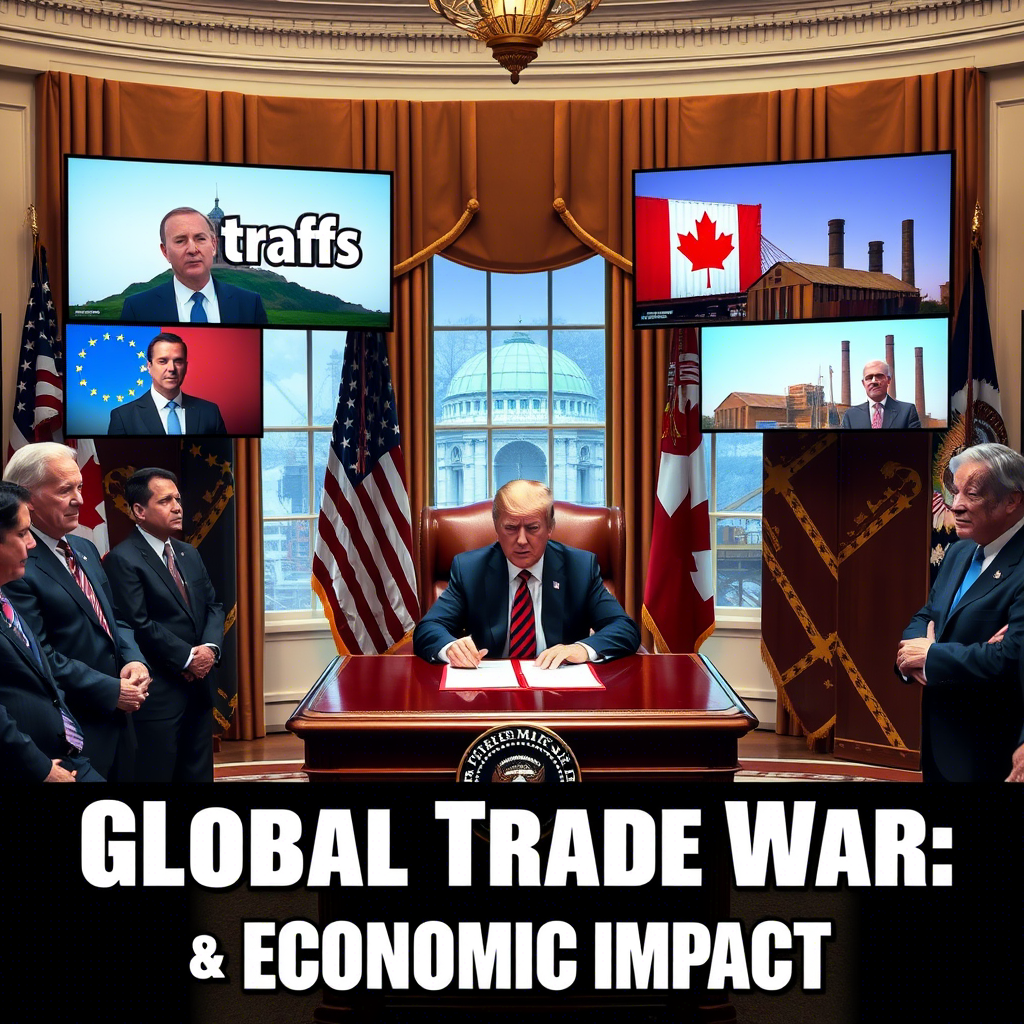President Donald Trump Imposes Sweeping Tariffs on Steel and Aluminum, Sparking Global Trade Tensions
In a bold move aimed at bolstering U.S. manufacturing, President Donald Trump announced on Wednesday the imposition of sweeping 25% tariffs on all steel and aluminum imported into the United States. The policy, designed to level the playing field for American industries, has raised concerns about potential price hikes on a wide range of consumer and industrial goods. The decision marks the latest escalation in Trump’s broader tariff strategy, which seeks to address perceived trade imbalances and revive domestic manufacturing. However, it also risks triggering a global trade war, as key U.S. allies swiftly retaliated with their own countermeasures.
The European Union, targeted by higher U.S. tariffs for the first time since Trump’s return to the White House, responded within hours by announcing tariffs on U.S. exports. Canada followed suit later in the day, unveiling over $20 billion in retaliatory measures. The rapid pushback underscores the growing tensions between the U.S. and its trading partners, as Trump’s protectionist policies continue to reshape global trade dynamics.
Speaking from the Oval Office on Wednesday, Trump vowed to escalate the situation further in response to the European and Canadian retaliation, though he did not specify how or when the U.S. would act. “Of course I will respond,” Trump said, signaling his determination to press forward with his trade agenda.
This latest round of tariffs is significant because it marks the first time during Trump’s second term that such measures have been applied universally, affecting all countries exporting steel and aluminum to the U.S. While the move is intended to strengthen America’s steel and aluminum industries, it carries substantial risks. By increasing the cost of these critical materials, the tariffs could drive up expenses for U.S. manufacturers, potentially leading to higher prices for consumers. Analysts warn that the economic costs of these tariffs could outweigh their benefits, as seen during Trump’s first term.
A 2023 analysis by the International Trade Commission found that while Trump’s 2018 metals tariffs modestly boosted U.S. production, they also led to higher costs for industries reliant on steel and aluminum, such as automotive and machinery manufacturing. By 2021, these increased costs had reduced output in those sectors by more than $3 billion. The tariffs also risk harming the very industries they aim to protect. William Uplinger, CEO of Alcoa, one of the largest U.S. aluminum producers, warned last month that Trump’s tariffs could result in the loss of 100,000 American jobs, including 20,000 in the aluminum industry alone.
As the global trade landscape grows increasingly volatile, the long-term impact of Trump’s tariff policies remains uncertain. While the administration argues that the measures are necessary to protect American industries and workers, critics caution that the potential for economic fallout—both domestically and internationally—could undermine these efforts. With the U.S. and its allies locked in a tit-for-tat trade dispute, the world watches closely to see whether Trump’s gamble will pay off or further destabilize the global economy.





Leave a Reply